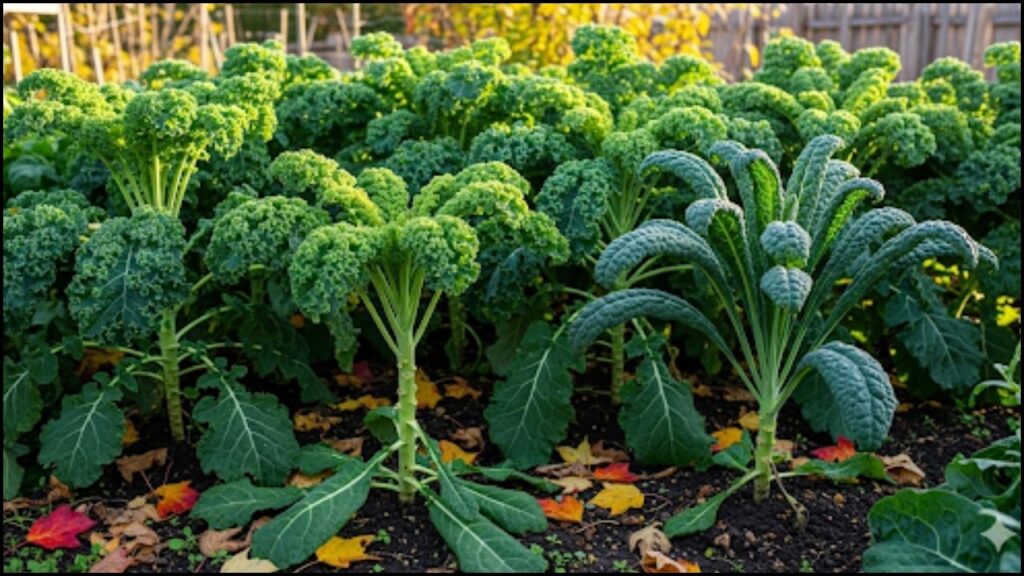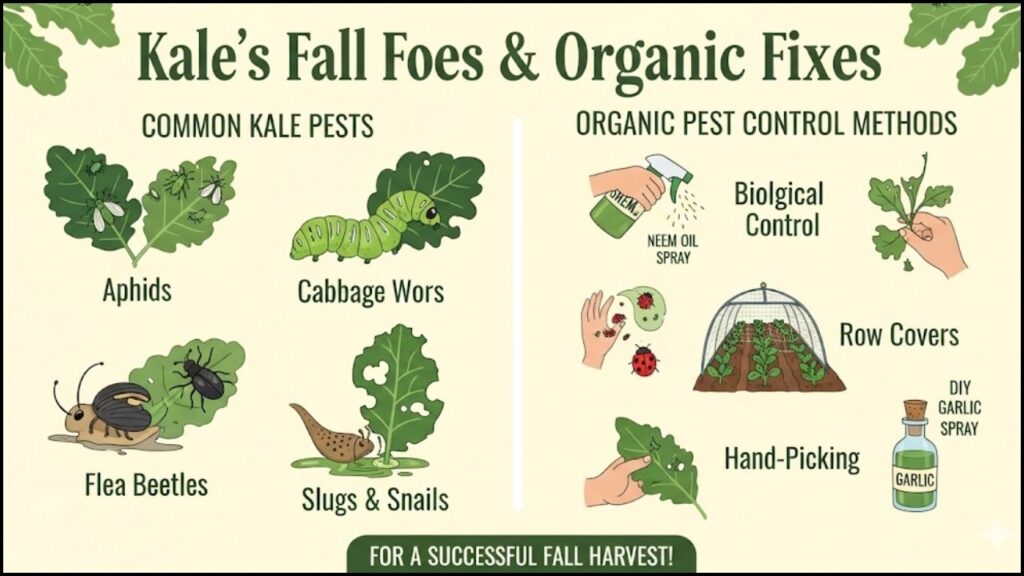As summer temperatures gradually recede, gardeners in regions with distinct seasons are entering an optimal window for planting kale to ensure a robust fall harvest. This strategic timing leverages cooler weather and specific soil conditions, which are crucial for the plant’s development and flavor profile. Expert horticulturalists emphasize that understanding local climate patterns is paramount for maximizing yield and quality.

Key Insights for Fall Kale Planting
| Key Fact | Detail/Statistic |
| Optimal Planting Time | 6-8 weeks before the first anticipated fall frost. |
| Ideal Temperature | Daytime temperatures consistently below 75°F (24°C). |
| Soil Requirements | Well-draining, rich in organic matter, pH 6.0-7.0. |
| Flavor Enhancement | Cooler temperatures and light frosts enhance sweetness and reduce bitterness. |
| Varieties to Consider | ‘Red Russian’, ‘Lacinato’ (Dinosaur), ‘Siberian’, ‘Winterbor’. |
The Science of Seasonal Planting
Kale (Brassica oleracea var. sabellica), a member of the cabbage family, thrives in cooler conditions. Unlike many summer vegetables that require intense heat, kale benefits significantly from the decreasing temperatures of late summer and early fall. This period, particularly 6-8 weeks before the first anticipated fall frost, allows the plants to establish strong root systems and develop tender, flavorful leaves.
“Planting kale in late summer capitalizes on a sweet spot in the growing season,” explains Dr. Priya Sharma, a senior agricultural scientist at the Indian Council of Agricultural Research (ICAR). “The soil retains residual warmth from summer, which aids germination, but the cooler ambient air prevents bolting and promotes the accumulation of sugars in the leaves, enhancing flavor.” Bolting, a process where plants prematurely produce flower stalks and seeds, is often triggered by high temperatures and can make kale leaves bitter and tough.
Preparation: The Foundation for a Strong Harvest
Successful kale cultivation begins with meticulous soil preparation. Kale prefers well-draining soil rich in organic matter, with a pH level between 6.0 and 7.0. Before planting, it is advisable to conduct a soil test to determine nutrient deficiencies and pH levels. Amending the soil with compost or well-rotted manure can significantly improve its structure and fertility.
“Soil health is non-negotiable for robust brassicas like kale,” states Rajesh Kumar, a seasoned organic farmer from Rishikesh, Uttarakhand. “We always advocate for enriching the soil with organic matter in advance. This not only feeds the plants but also improves water retention and aeration, which are critical as the weather changes.”
When planting, seeds should be sown about half an inch deep and an inch apart in rows approximately 18-24 inches apart. Once seedlings emerge and develop their first true leaves, they should be thinned to 8-12 inches apart to allow for adequate air circulation and growth. Alternatively, seedlings purchased from nurseries can be transplanted directly into prepared beds, ensuring they are spaced appropriately.
Watering, Sunlight, and Pest Management

Kale requires consistent moisture, especially during dry spells, but overwatering should be avoided to prevent root rot. A general guideline is to provide 1-1.5 inches of water per week, either through rainfall or irrigation. Mulching around the plants with straw or wood chips can help retain soil moisture, suppress weeds, and regulate soil temperature.
Full sun exposure, meaning at least six hours of direct sunlight daily, is ideal for kale. While kale can tolerate some partial shade, particularly in warmer climates, adequate sunlight is essential for vigorous growth and nutrient development.
Pest management is another critical aspect of a successful kale harvest. Common pests include cabbage worms, aphids, and flea beetles. Organic methods such as hand-picking visible pests, using insecticidal soap for aphids, or deploying row covers to protect young plants can be effective. Crop rotation is also a crucial preventative measure to break pest cycles and reduce disease incidence in the soil.
The Role of Temperature in Flavor Development
One of the most appealing aspects of a fall kale harvest is the superior flavor profile of leaves matured in cooler temperatures. As temperatures drop and light frosts occur, kale plants convert starches into sugars, resulting in a sweeter, less bitter taste and a more tender texture. This natural process is often referred to as “sweetening” by gardeners.
“The colder nights of autumn are nature’s way of perfecting the kale leaf,” explains Dr. Anjali Singh, a botanist at the Forest Research Institute (FRI) in Dehradun. “This physiological response to cold stress enhances the palatability of the vegetable, making fall-grown kale a culinary delight compared to its summer counterpart.”
Harvesting Techniques and Storage
Kale leaves can be harvested once they reach an edible size, typically 8-10 inches long. The “cut-and-come-again” method is highly recommended: harvest the outer, larger leaves first, leaving the inner, smaller leaves to continue growing. This approach encourages continuous production throughout the fall and even into early winter in many regions. Avoid harvesting the central growing point of the plant to ensure ongoing leaf development.
Freshly harvested kale can be stored in the refrigerator for up to a week. For longer preservation, kale can be blanched and then frozen, or dehydrated. These methods allow gardeners to enjoy their kale harvest well beyond the growing season.
Looking Ahead: Extending the Season
Even as winter approaches, some kale varieties, particularly those labeled ‘cold-hardy’ or ‘winterbor’, can withstand significant frosts and even light snow, extending the harvesting period. Gardeners can further protect their plants with cloches, cold frames, or low tunnels, effectively creating a microclimate that allows for harvesting well into the colder months. This adaptability makes kale a valuable component of a resilient, season-extending garden.
The strategic decision to plant kale now, leveraging the unique conditions of late summer and early fall, positions gardeners for a rewarding and flavorful kale harvest. The effort invested in proper soil preparation, vigilant care, and an understanding of the plant’s response to cooler temperatures culminates in a fresh, nutrient-rich bounty that exemplifies the benefits of seasonal gardening.
7 Plants Gardeners Always Mulch in Fall for Better Plants Next Spring and You Should Too
